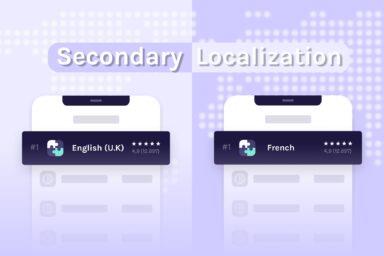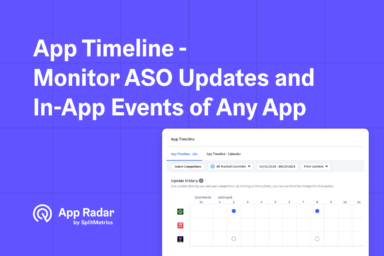5 Essential Factors in Competitor Analysis for Mobile Apps
The mobile app industry is growing larger and larger every single year. As an app developer, marketer, or publisher, you need to know who and what you’re up against at all times. Falling behind your competitors could mean certain death for your mobile app ventures. To avoid being left in the dust, make sure you’re evaluating these 5 very essential factors the next time you perform a competitor analysis.

1. Start Competitor Analysis by Finding Competitor Apps
Naturally, the first step in competitor analysis for mobile apps is finding your competitors.
Competitors are apps that:
- fit your app’s niche and/or category
- target a similar or same audience as your app
- share similar features and/or functionalities with your app
- show up in the app store search results for relevant keywords
Don’t know where to start? No worries! The simplest way to begin identifying competitors is with help from the App Radar App Store Optimization tool.
First, App Radar analyzes your app and the AI will recommend suitable competitors to track.
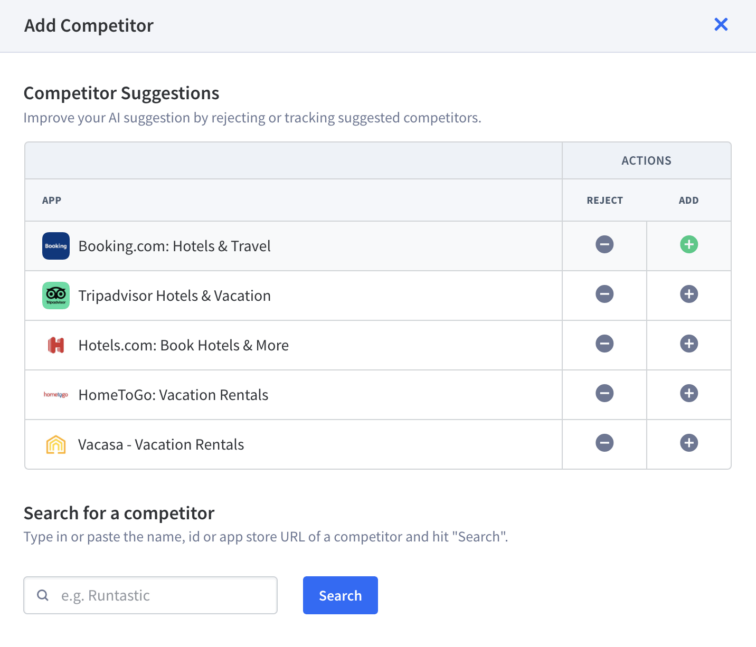
Source: App Radar
Next, you can find further competitors by producing live search results for relevant keywords. For example, if you have a vacation booking app, you can see which apps show up in the search results for the keyword, “vacation”.

Source: App Radar
Lastly, you are able to discover more competitors by checking the relevant top chart rankings.

Source: App Radar
Every time you find a relevant competitor, add them to your competitor tracking list in App Radar. This is necessary in order to move forward with your competitor analysis.
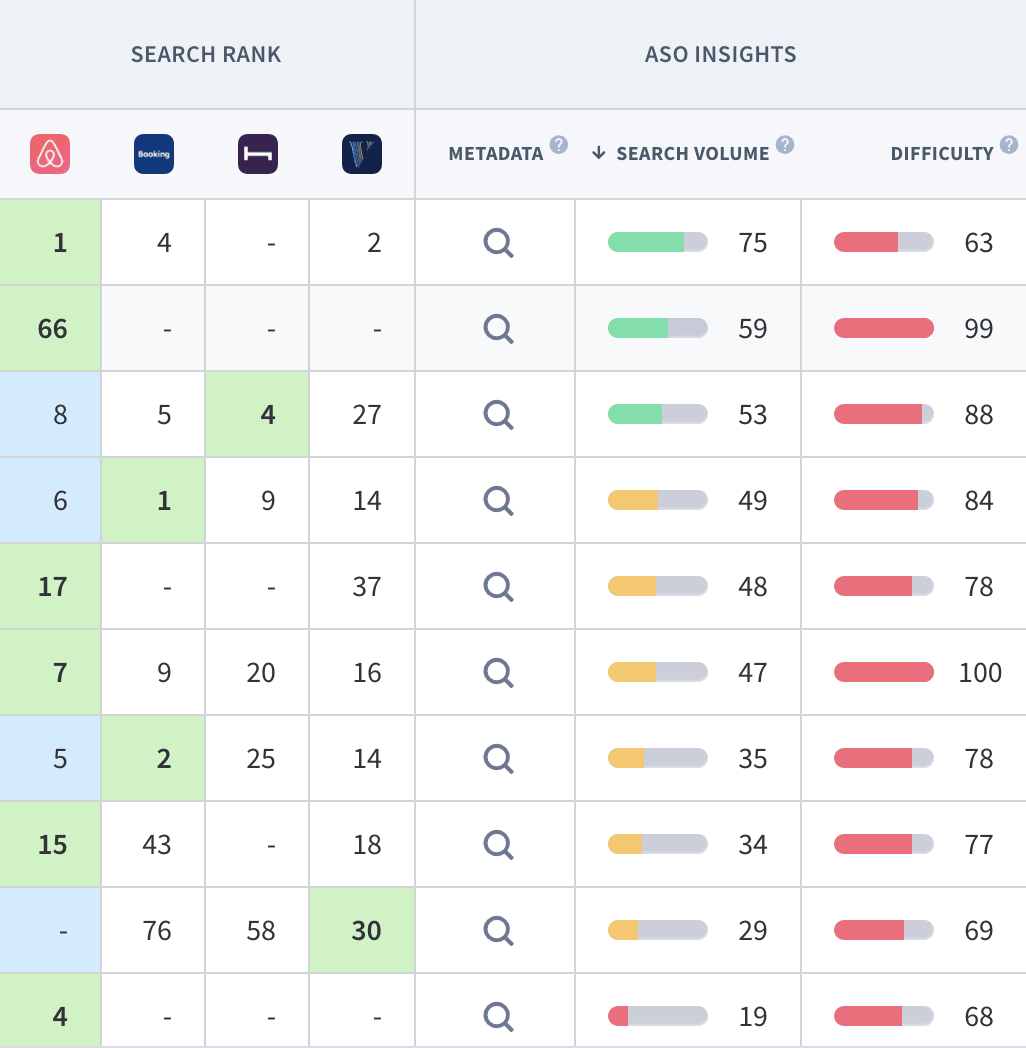
2. Reviewing App Store Category Rankings for Competitor Analysis
Now that you’ve tracked all of your competitors, you can see how you compare in the app store category rankings. The rankings inform you about who the big players are and who the newcomers are. It’s a good idea to start your competitor analysis by analyzing the leading industry apps, your biggest competitors.
The example below shows the category rankings for Travel in the US Apple App Store. Here you can see that Airbnb has held steady as the leader in travel apps. In addition, the information allows you to infer that the travel app category is quite difficult to disrupt. Apps do not move drastically up or down in rankings and this is true for the past several months.

Source: App Radar
3. Check Your Competitors’ App Store Rankings
Another essential part of competitor analysis for mobile apps is app store rankings. You want to see which keywords competitors apps are ranked in the top 10 for.
An app’s rank is the position that it appears in the search results for specific keywords or query. The organic growth strategy called App Store Optimization includes working to improve app store rankings. Apps are ranked in Apple App Store and Google Play Store based on multiple factors with the main factor being keywords. By identifying which keywords your competitors rank in the top for, you will be able to gather relevant ones for your own App Store Optimization strategy.
Furthermore, knowing your competitors’ top-ranked keywords gets you accustomed to the words and language people use to find apps like yours.
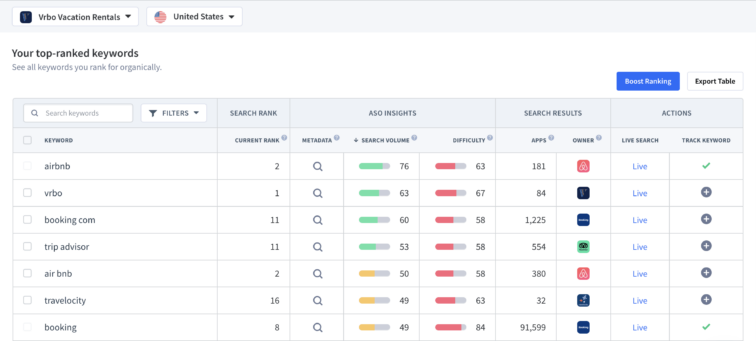
Source: App Radar
App Radar shows you the top-ranked keywords for your app as well as your competitors. Simply go to the Keyword Rankings feature and select the app you’d like to analyze. Then make sure you’re adding relevant keywords to your tracking list.
Follow up by comparing your rankings for these keywords with your competitors. The comparison enables you to discover keywords with growth potential and those that you may want to throw out.
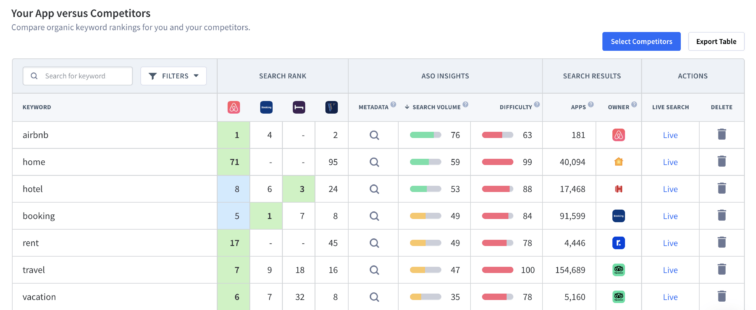
Remember, using obvious competitor app names as keywords in your app store listing is not well received by neither Apple nor Google. Doing so could get your update rejected. Avoid placing brand names in your app store listing and stick with generic keywords.
4. Which Keywords are Your Competitors Apps Running Ads On?
Organic app store rankings are not the only way to see which keywords are important to your competitors. A great way to determine the keywords and the audience that are vital to your competitors growth strategy is to uncover their app store advertising strategy.
This is a big part of your competitor analysis. It’ll answer questions such as:
- How much money are my competitors spending on UA?
- How aggressive are my competitors’ UA strategy?
- Is my app’s brand name being attacked?
You may be wondering what these questions mean, especially the one about your brand name being attacked. We’re about to find out.
The more money an app developer, marketer, and publisher are willing to spend on acquiring users, the more aggressive their growth and acquisition strategy is. When they’re really aggressive, they’ll run ads on your app’s brand name. So when people search the app stores for your app, your competitor will show up before yours in the search results.
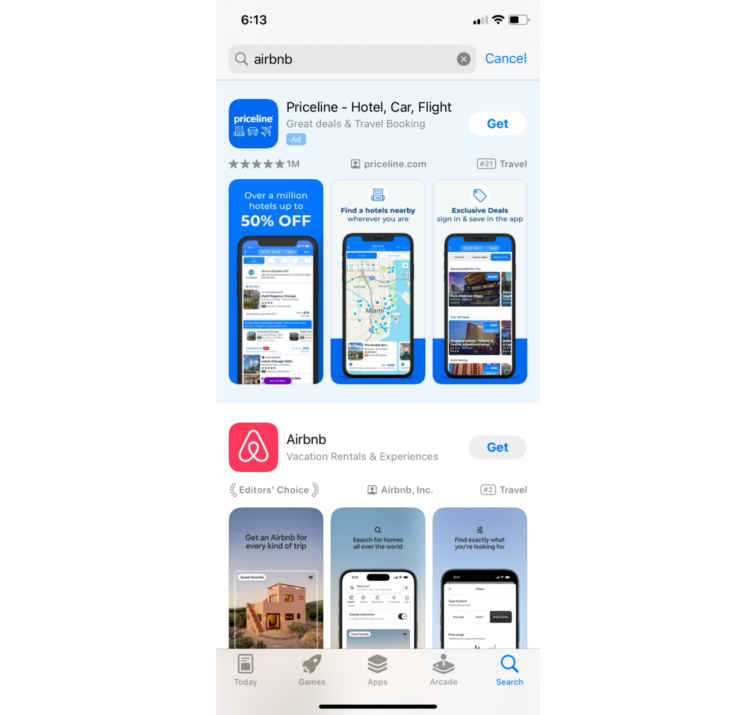
Source: Apple App Store
Vrbo is running an aggressive app store advertising campaign via Apple Search Ads. They are targeting “Airbnb” as a keyword, knowing that many people search for Airbnb in the Apple App Store. In essence, Vrbo is attacking Airbnb’s brand name.
Good thing, determining how many app store ads your competitors are running and which keywords they’re targeting is easy with App Radar. All you have to do is go to the Search Ads feature.
You can check if anyone is attacking your app’s brand name by going to the Share of Voice (SOV) feature within Search Ads in App Radar. Type in your app’s name and see who’s trying to steal your audience.

Source: App Radar
Then, the Search Ads Inspector enables you to see every keyword an app is running ads on and the corresponding Share of Voice (SOV).
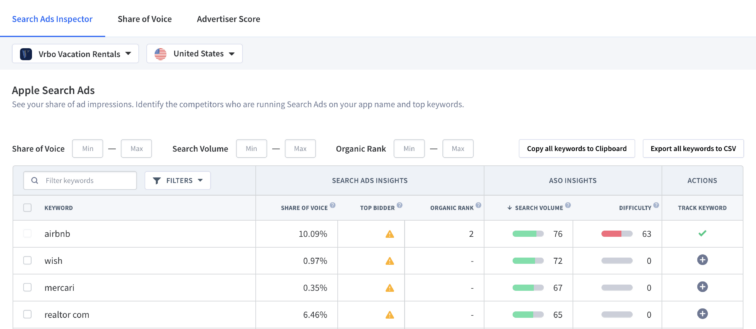
Source: App Radar
5. Discover Strengths and Weaknesses of Competitor Apps through Competitor Analysis
Lastly, competitor analysis allows you to discover strengths and weaknesses of your competitor apps.
There are 2 straightforward ways to do this. The first is to check their app screenshots and app description. These usually highlight the main features of the app, their unique selling points, or USPs. The second is to read through some of the user reviews. Users will be quick to point out what they love and hate about the app. Markdown any improvements users want to be made. You can later use these notes to inform your app development roadmap.
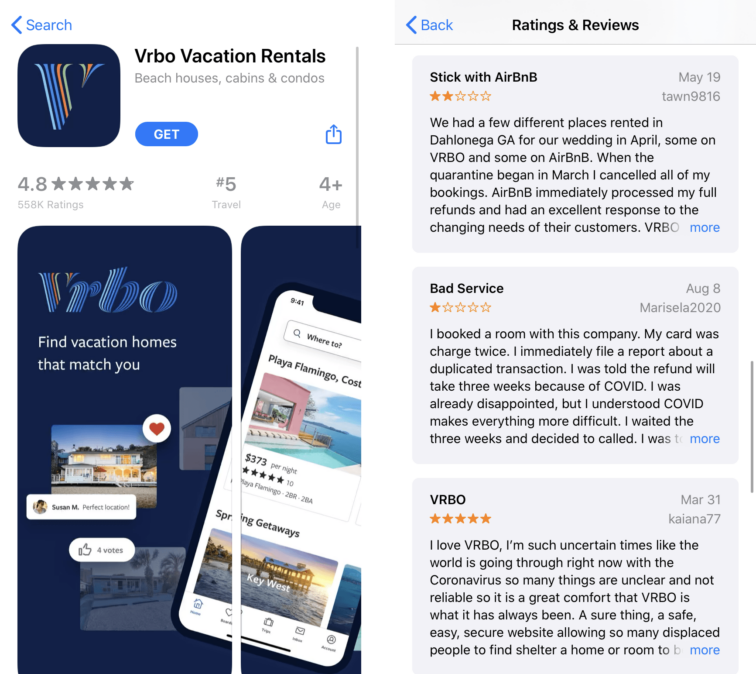
Source: Vrbo on Apple App Store
Learn how to conduct a competitor’s creatives analysis.
Essential Factors in Competitor Analysis for Mobile Apps Summary
Competitor analysis involves finding the right competitors, seeing how they’re performing in the app stores, checking their app store rankings, uncovering their app store ad strategy, and identifying their strengths and weaknesses.


Latest Posts
